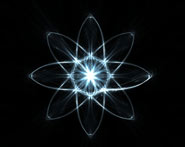


 الفيزياء الكلاسيكية
الفيزياء الكلاسيكية
 الكهربائية والمغناطيسية
الكهربائية والمغناطيسية
 علم البصريات
علم البصريات
 الفيزياء الحديثة
الفيزياء الحديثة
 النظرية النسبية
النظرية النسبية
 الفيزياء النووية
الفيزياء النووية
 فيزياء الحالة الصلبة
فيزياء الحالة الصلبة
 الليزر
الليزر
 علم الفلك
علم الفلك
 المجموعة الشمسية
المجموعة الشمسية
 الطاقة البديلة
الطاقة البديلة
 الفيزياء والعلوم الأخرى
الفيزياء والعلوم الأخرى
 مواضيع عامة في الفيزياء
مواضيع عامة في الفيزياء|
أقرأ أيضاً
التاريخ: 2024-06-29
التاريخ: 2024-03-13
التاريخ: 12-7-2016
التاريخ: 21-1-2016
|
We shall give a derivation of the properties of the propagation of sound between the source and the receiver as a consequence of Newton’s laws, and we shall not consider the interaction with the source and the receiver. Ordinarily we emphasize a result rather than a particular derivation of it. In this chapter we take the opposite view. The point here, in a certain sense, is the derivation itself. This problem of explaining new phenomena in terms of old ones, when we know the laws of the old ones, is perhaps the greatest art of mathematical physics. The mathematical physicist has two problems: one is to find solutions, given the equations, and the other is to find the equations which describe a new phenomenon. The derivation here is an example of the second kind of problem.
We shall take the simplest example here—the propagation of sound in one dimension. To carry out such a derivation it is necessary first to have some kind of understanding of what is going on. Fundamentally what is involved is that if an object is moved at one place in the air, we observe that there is a disturbance which travels through the air. If we ask what kind of disturbance, we would say that we would expect that the motion of the object produces a change of pressure. Of course, if the object is moved gently, the air merely flows around it, but what we are concerned with is a rapid motion, so that there is not sufficient time for such a flow. Then, with the motion, the air is compressed and a change of pressure is produced which pushes on additional air. This air is in turn compressed, which leads again to an extra pressure, and a wave is propagated.
We now want to formulate such a process. We have to decide what variables we need. In our particular problem we would need to know how much the air has moved, so that the air displacement in the sound wave is certainly one relevant variable. In addition, we would like to describe how the air density changes as it is displaced. The air pressure also changes, so this is another variable of interest. Then, of course, the air has a velocity, so that we shall have to describe the velocity of the air particles. The air particles also have accelerations—but as we list these many variables, we soon realize that the velocity and acceleration would be known if we knew how the air displacement varies with time.
As we said, we shall consider the wave in one dimension. We can do this if we are sufficiently far from the source that what we call the wavefronts are very nearly planes. We thus make our argument simpler by taking the least complicated example. We shall then be able to say that the displacement, χ, depends only on x and t, and not on y and z. Therefore the description of the air is given by χ (x,t).
Is this description complete? It would appear to be far from complete, for we know none of the details of how the air molecules are moving. They are moving in all directions, and this state of affairs is certainly not described by means of this function χ (x,t). From the point of view of kinetic theory, if we have a higher density of molecules at one place and a lower density adjacent to that place, the molecules would move away from the region of higher density to the one of lower density, so as to equalize this difference. Apparently, we would not get an oscillation and there would be no sound. What is necessary to get the sound wave is this situation: as the molecules rush out of the region of higher density and higher pressure, they give momentum to the molecules in the adjacent region of lower density. For sound to be generated, the regions over which the density and pressure change must be much larger than the distance the molecules travel before colliding with other molecules. This distance is the mean free path and the distance between pressure crests and troughs must be much larger than this. Otherwise, the molecules would move freely from the crest to the trough and immediately smear out the wave.
It is clear that we are going to describe the gas behavior on a scale large compared with the mean free path, and so the properties of the gas will not be described in terms of the individual molecules. The displacement, for example, will be the displacement of the center of mass of a small element of the gas, and the pressure or density will be the pressure or density in this region. We shall call the pressure P and the density ρ, and they will be functions of x and t. We must keep in mind that this description is an approximation which is valid only when these gas properties do not vary too rapidly with distance.



|
|
|
|
دراسة: عدم ترتيب الغرفة قد يدل على مشاكل نفسية
|
|
|
|
|
|
|
علماء: تغير المناخ تسبب في ارتفاع الحرارة خلال موسم الحج
|
|
|
|
|
|
|
سبعة باحثين ناقشوا محاور النسخة الثانية من مؤتمر الإمام السجاد (عليه السلام)
|
|
|